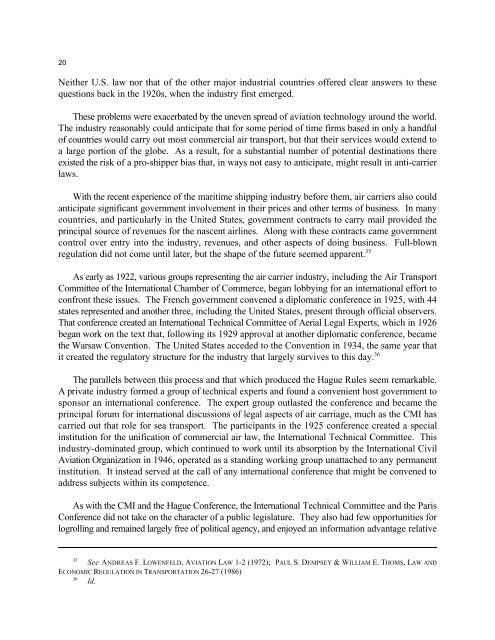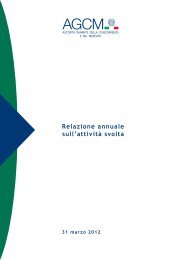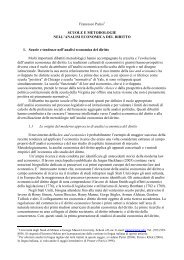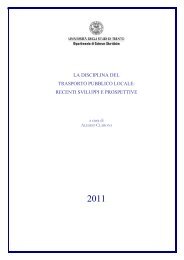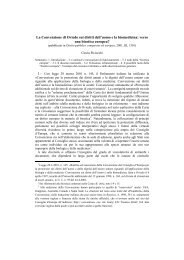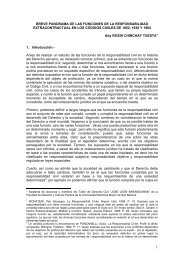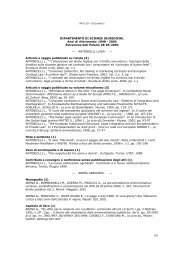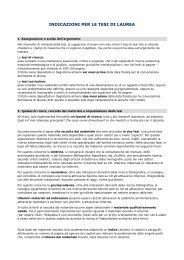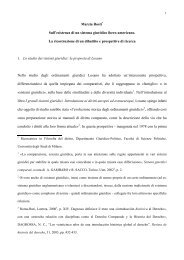The Futility of Unification and Harmonization in International ...
The Futility of Unification and Harmonization in International ...
The Futility of Unification and Harmonization in International ...
Create successful ePaper yourself
Turn your PDF publications into a flip-book with our unique Google optimized e-Paper software.
20Neither U.S. law nor that <strong>of</strong> the other major <strong>in</strong>dustrial countries <strong>of</strong>fered clear answers to thesequestions back <strong>in</strong> the 1920s, when the <strong>in</strong>dustry first emerged.<strong>The</strong>se problems were exacerbated by the uneven spread <strong>of</strong> aviation technology around the world.<strong>The</strong> <strong>in</strong>dustry reasonably could anticipate that for some period <strong>of</strong> time firms based <strong>in</strong> only a h<strong>and</strong>ful<strong>of</strong> countries would carry out most commercial air transport, but that their services would extend toa large portion <strong>of</strong> the globe. As a result, for a substantial number <strong>of</strong> potential dest<strong>in</strong>ations thereexisted the risk <strong>of</strong> a pro-shipper bias that, <strong>in</strong> ways not easy to anticipate, might result <strong>in</strong> anti-carrierlaws.With the recent experience <strong>of</strong> the maritime shipp<strong>in</strong>g <strong>in</strong>dustry before them, air carriers also couldanticipate significant government <strong>in</strong>volvement <strong>in</strong> their prices <strong>and</strong> other terms <strong>of</strong> bus<strong>in</strong>ess. In manycountries, <strong>and</strong> particularly <strong>in</strong> the United States, government contracts to carry mail provided thepr<strong>in</strong>cipal source <strong>of</strong> revenues for the nascent airl<strong>in</strong>es. Along with these contracts came governmentcontrol over entry <strong>in</strong>to the <strong>in</strong>dustry, revenues, <strong>and</strong> other aspects <strong>of</strong> do<strong>in</strong>g bus<strong>in</strong>ess. Full-blown35regulation did not come until later, but the shape <strong>of</strong> the future seemed apparent.As early as 1922, various groups represent<strong>in</strong>g the air carrier <strong>in</strong>dustry, <strong>in</strong>clud<strong>in</strong>g the Air TransportCommittee <strong>of</strong> the <strong>International</strong> Chamber <strong>of</strong> Commerce, began lobby<strong>in</strong>g for an <strong>in</strong>ternational effort toconfront these issues. <strong>The</strong> French government convened a diplomatic conference <strong>in</strong> 1925, with 44states represented <strong>and</strong> another three, <strong>in</strong>clud<strong>in</strong>g the United States, present through <strong>of</strong>ficial observers.That conference created an <strong>International</strong> Technical Committee <strong>of</strong> Aerial Legal Experts, which <strong>in</strong> 1926began work on the text that, follow<strong>in</strong>g its 1929 approval at another diplomatic conference, becamethe Warsaw Convention. <strong>The</strong> United States acceded to the Convention <strong>in</strong> 1934, the same year thatit created the regulatory structure for the <strong>in</strong>dustry that largely survives to this day. 36<strong>The</strong> parallels between this process <strong>and</strong> that which produced the Hague Rules seem remarkable.A private <strong>in</strong>dustry formed a group <strong>of</strong> technical experts <strong>and</strong> found a convenient host government tosponsor an <strong>in</strong>ternational conference. <strong>The</strong> expert group outlasted the conference <strong>and</strong> became thepr<strong>in</strong>cipal forum for <strong>in</strong>ternational discussions <strong>of</strong> legal aspects <strong>of</strong> air carriage, much as the CMI hascarried out that role for sea transport. <strong>The</strong> participants <strong>in</strong> the 1925 conference created a special<strong>in</strong>stitution for the unification <strong>of</strong> commercial air law, the <strong>International</strong> Technical Committee. This<strong>in</strong>dustry-dom<strong>in</strong>ated group, which cont<strong>in</strong>ued to work until its absorption by the <strong>International</strong> CivilAviation Organization <strong>in</strong> 1946, operated as a st<strong>and</strong><strong>in</strong>g work<strong>in</strong>g group unattached to any permanent<strong>in</strong>stitution. It <strong>in</strong>stead served at the call <strong>of</strong> any <strong>in</strong>ternational conference that might be convened toaddress subjects with<strong>in</strong> its competence.As with the CMI <strong>and</strong> the Hague Conference, the <strong>International</strong> Technical Committee <strong>and</strong> the ParisConference did not take on the character <strong>of</strong> a public legislature. <strong>The</strong>y also had few opportunities forlogroll<strong>in</strong>g <strong>and</strong> rema<strong>in</strong>ed largely free <strong>of</strong> political agency, <strong>and</strong> enjoyed an <strong>in</strong>formation advantage relative35See ANDREAS F. LOWENFELD, AVIATION LAW 1-2 (1972); PAUL S. DEMPSEY & WILLIAM E. THOMS, LAW ANDECONOMIC REGULATION IN TRANSPORTATION 26-27 (1986)36Id.


